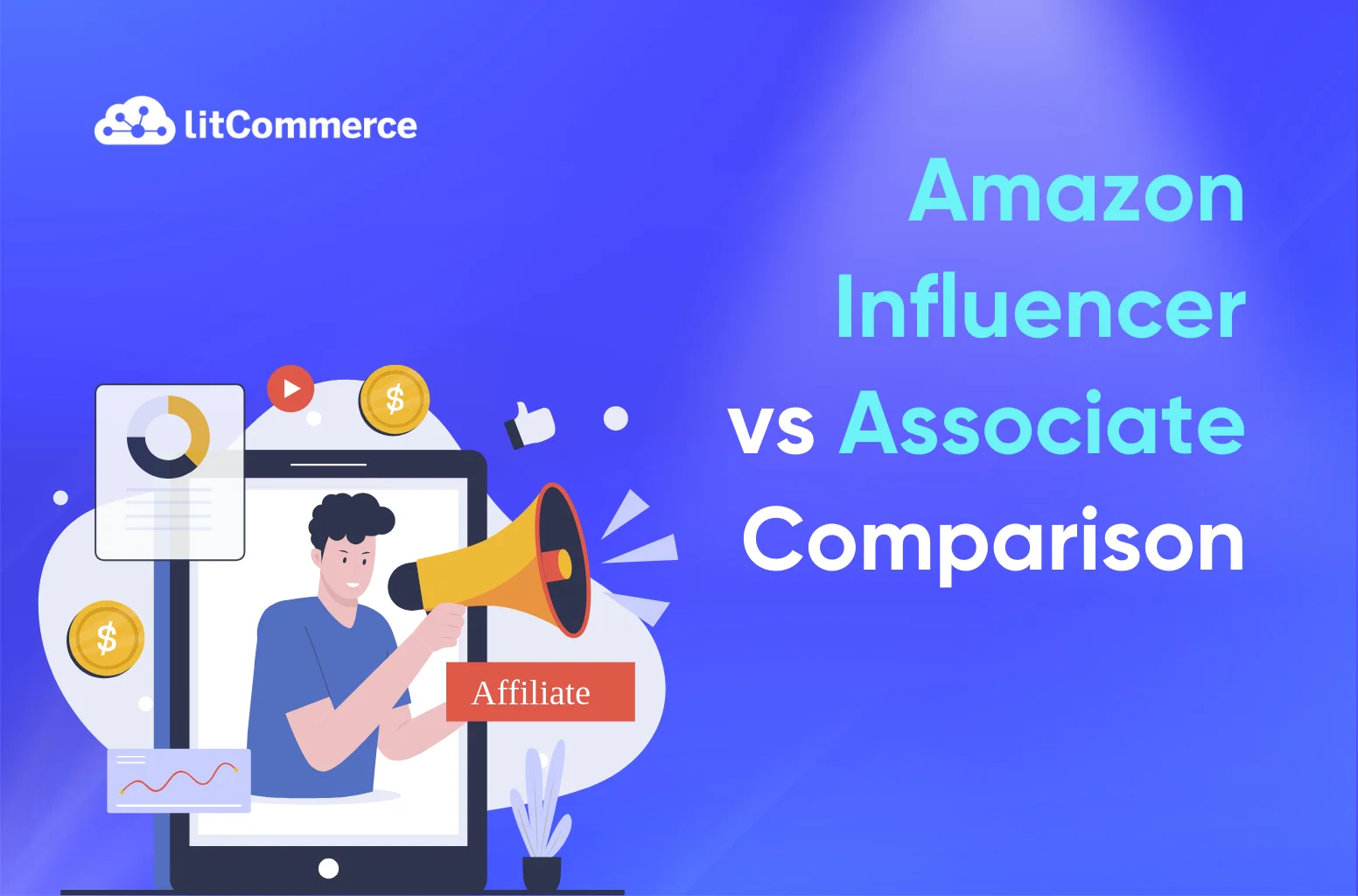If you’re looking for the answer to the question “Is Amazon FBA worth it?” or “How to make money on Amazon?” you may have heard of the Amazon Influencer vs Associate programs. But are they the same? Which program should you join?
Stick around as we uncover the core differences and similarities between the two programs.
In short, the Amazon Influencer program and the Amazon Associates program are part of Amazon’s affiliate marketing system. Both enable users to earn money by promoting Amazon products. However, the Influencer program shines on social media, while Associates work with websites or blogs.
Let’s find out which Amazon path fits you in our comprehensive article regarding the following factors:
- #1. Application requirements
- #2. Promoting Amazon products
- #3. Monetizing global traffic
- #4. Getting paid & commission structure
- #5. Amazon affiliation disclosure
- #6. Account Termination
Amazon Influencer Vs Associate: What It Is and How It Works?
Before we dive into the detailed comparison between the Amazon Influencer vs Associate programs, let’s understand what they are and how they work.
What is the Amazon Influencer program?
Amazon Influencer Program is like an extra part of Amazon Associates, which is its main affiliate program. In this program, an Amazon Influencer is a content creator who gets paid for guiding people to buy products on Amazon via social media. You share your Amazon storefront link with your followers and make cash when they buy something using your link.
As an Amazon Influencer, you’ll have an Amazon storefront and URL to help you show and recommend products to your followers.
In addition, you’ll have a chance to join the Amazon offsite commissions program. The Amazon offsite commissions program is a part of the Amazon Influencer program. Creators who qualify can create content that lets people buy things directly from their Amazon store. This content also appears in product review videos on Amazon. When people click to watch your content and buy something, you get paid.

So, how does the Amazon Influencer program work? This is also one of the major differences between Amazon Associate vs Amazon Influencer programs.
Once you’re in the Amazon Influencer program, here’s what you do to create your Amazon store:
- Create your storefront: Build a special Amazon store or Amazon page with your own URL.
- Create content: Start making content and leverage your influencer to get people to buy things from your Amazon storefront.
- Earn commissions: Get paid when your recommendations lead to purchases.
Amazon Influencers also can choose from various ways to make content and promote Amazon items:
- Host live streams as Amazon Live Influencers
- Create shoppable content and videos
What is the Amazon Associate Program?
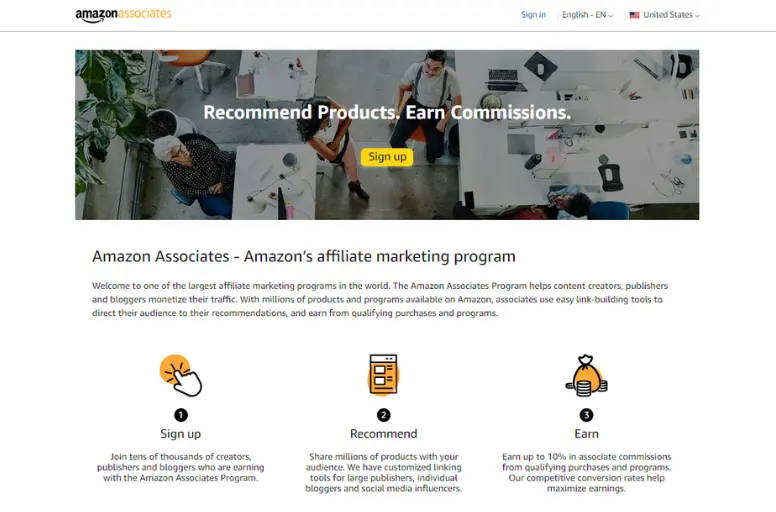
The Amazon Associates Program, also known as the Amazon affiliate program, is Amazon’s main way for affiliates to earn money. It’s for creators and influencers who want to promote Amazon products and get paid for it.
The major difference between the Amazon Influencer vs Associate programs lies in how it works.
When you become an Amazon associate, you’ll have a dashboard to manage your referrals. You’ll get a special link for each product you recommend. Plus, you can track how well your recommendations are doing with analytics. There are also tools, like SiteStripe, Product Advertising API, etc., to help you create links easily.
For instance, let’s say you link to a product, and someone buys it through your link. You can get up to a 10% commission from qualifying purchases and programs.
Amazon Influencer vs Amazon Associate: What are Differences and Similarities?
Now that you’ve learned all about Amazon Influencer vs Associates programs, let’s explore them in detail. They may seem similar at first, but they have distinct features.
Here’s a quick comparison table of the Amazon Influencer program vs Associate:
Aspect | Amazon Affiliate Program | Amazon Influencer Program |
Application Requirements | 👉 Requires website or blog 👉 Potential for an app or YouTube channel 👉 No strict traffic or follower requirement | 👉 Needs one active social media account 👉 New accounts may need 1-5k followers 👉 Stricter approval based on engagement |
Amazon Products Promotion | 👉 Access to Site Stripe for direct links for individual items 👉 Embed links/images on blog/social media | 👉 Creation of "Storefront" 👉 Unable to generate links for individual products 👉 Ability to share storefront influencer link online/offline |
Monetizing Global Traffic | 👉 Reach multiple Amazon marketplaces 👉 One Link system adjusts links to audience's location | 👉 No monetization for international audiences currently 👉 One store per marketplace 👉 Commission earnings reliant on product categories |
Payment & Commission Structure | Same commission structure (1%-20% per qualifying sale) | Identical commission structure (1%-20% per qualifying sale) |
Account Termination | Failure to generate 3 sales within the first 180 days could lead to termination | 👉 Account dormancy or lack of active promotion can trigger termination 👉 Violation of trademark or offering incentives can lead to expulsion |
#1. Application requirements
Exploring how to join the Amazon Influencer vs Associates Program involves understanding their specific rules and steps. We’ll break down each program’s requirements to help you apply with confidence.
a. The Amazon Associate Program
The Amazon Influencer vs Affiliate program requires different criteria to join. Here’s what you need to have to apply for the Amazon Associate program:
You must have a website or blog, with the possibility of an app or YouTube channel in some cases. There’s no strict traffic or follower requirement, making it accessible for newcomers.
Upon applying, you immediately access the affiliate platform. However, you need 3 qualifying sales in the first 180 days for approval. Afterward, your account is manually reviewed, granting access to extra features upon approval, like promoting Amazon Bounties.
b. The Amazon Influencer Program
Application requirements make the Amazon Influencer vs Amazon Affiliate program different. In this Amazon Influencer program, you need at least one active social media account with substantial engagement and followers. A blog or website isn’t obligatory. But a new account may not qualify, aiming for around 1-5k followers.
The approval process is stricter, considering followers, engagement, and content quality. After approval, maintaining engagement by driving traffic to your Storefront and influencer link is crucial. Failure may lead to program removal, a concern not relevant to affiliates.
Verdict: If you want to promote Amazon products with less hassle? Then Amazon Associate wins! You just need an Amazon account and that’s all. Meanwhile, Amazon Influencer programe requires building a social media following first.
#2. Amazon products promotion
Another key difference between the Amazon Influencer vs Associate program is how you promote Amazon products.
a. The Amazon Associates Program
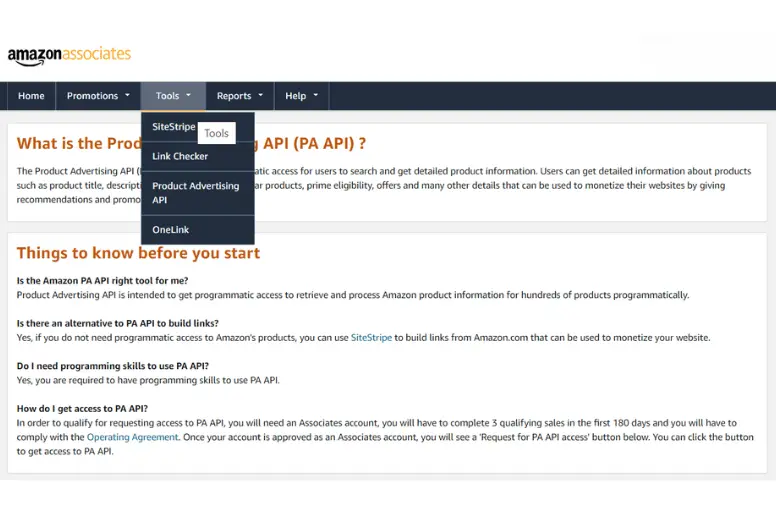
Once you sign up for the Amazon affiliate program, you’ll get access to the Amazon Site Stripe. This tool lets you create direct affiliate links for almost every product, which you can use to guide your audience to specific items.
You’re allowed to embed these links or images on your blog and social media. You can also use affiliate plugins like Lasso to make your product displays more attractive. However, you can’t share these links offline, like in PDFs or private chats.
Moreover, you can create affiliate links for special deals and earn bounties, such as $5 for someone creating a Baby or Wedding Registry or signing up for Amazon Prime.
b. The Amazon Influencer Program
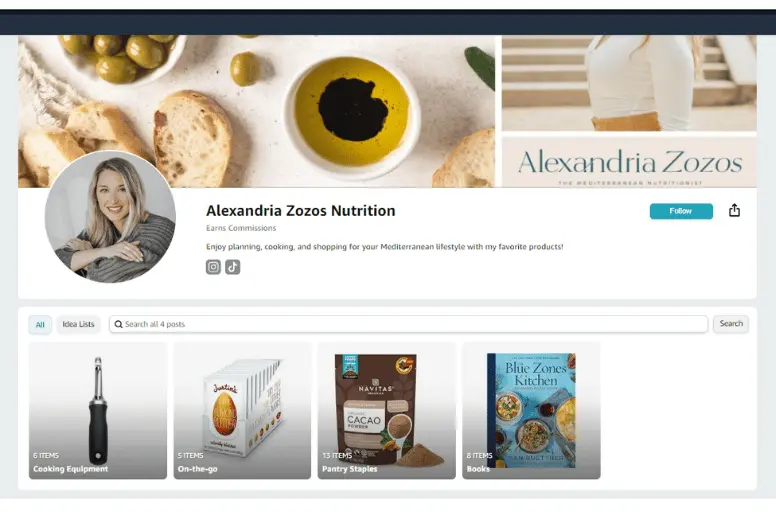
After being approved as an Amazon Influencer, you can create a “Storefront” to showcase the products you want to promote, organized by use, theme, or season. While you can link to specific categories on your profile, you can’t generate links for individual products.
Unlike affiliate links, you can share your storefront influencer link anywhere online and offline, including email, newsletters, and books. While Amazon affiliates must create their own websites, Amazon Influencers get a pre-made online store page on the Amazon platform.
In summary, when comparing the Amazon Affiliate vs Amazon Influencer program, the first one offers more flexibility in linking to individual products. However, the Influencer store link is easier to share on social media with limited space.
Despite this, Amazon Influencers have the advantage of having an online store page on the Amazon platform, while Amazon affiliates usually have to create their own websites or landing pages to showcase products.
Verdict: Here’s what I think, with Associates, you drive traffic to products yourself through website and blog. On the other hand, Influencers leverage Amazon’s traffic through their storefront link. This can be easier for conversions, but requires building an audience first.
#3. Monetizing global traffic
Monetizing global traffic is crucial for unlocking the full earning potential of your worldwide audience. Let’s explore how this is different between Amazon Influencer vs Associate program.
a. The Amazon Associate Program
The Amazon Associates vs Influencer programs offer different ways to monetize from a global audience.
As an Amazon affiliate, you can reach a wider audience by joining multiple Amazon marketplaces worldwide. By using the One Link system, your affiliate links adjust to your audience’s location, directing them to their local Amazon website. This helps you benefit from international sales, increasing your overall commissions, which is especially useful if you have a diverse global audience.
b. The Amazon Influencer Program
On the other hand, the Amazon Influencer Program currently doesn’t offer monetization for international audiences. However, you can create one store per marketplace, allowing you to share all your Storefront links across different regions. Yet, managing separate Storefronts can be challenging, and your commission earnings rely on product categories.
Verdict: These two programs heavily rely on content strategies. Then Associates have more flexibility. They can target specific demographics or regions through their website content and chosen products. Influencers, however, rely on their existing audience’s location. While they can build a global following, it might be less targeted compared to Associate.
#4. Payment & commission structure
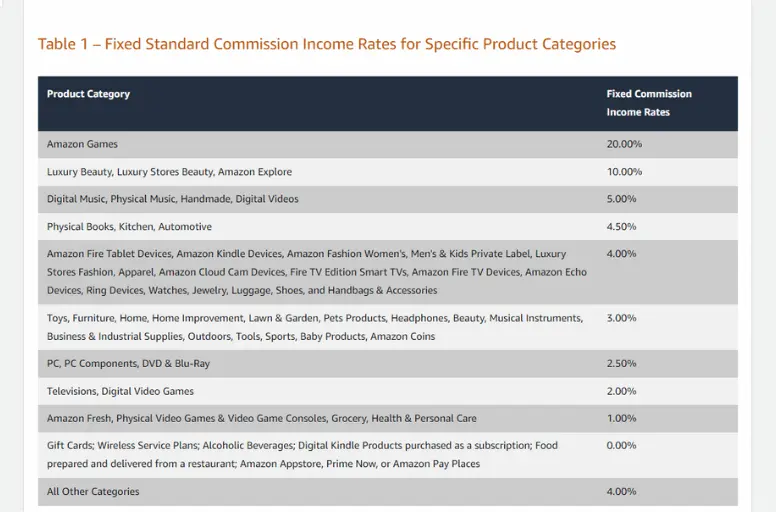
When it comes to earning commission, there is no difference between Amazon Associates and Influencer programs. You receive the same percentage or commission, which depends on the product category rather than your role.
Every Amazon product category has its fixed commission rate. Whether you promote as an affiliate or influencer, the commission rates usually range from 1% to 20% per product. This means that if you promote a specific category, the commission remains the same, ensuring fairness.
These commission rates of the Amazon Influencer vs Associate program can change often, so it’s wise to regularly review Amazon’s program standard commission.
Verdict: Profitability depends on various factors, not a single program being inherently better.
In Conclusion: Focus on your niche and traffic. Associates have wider product range but variable rates. Influencers might have higher rates but for specific categories and require audience building.
#5. Amazon affiliation disclosure
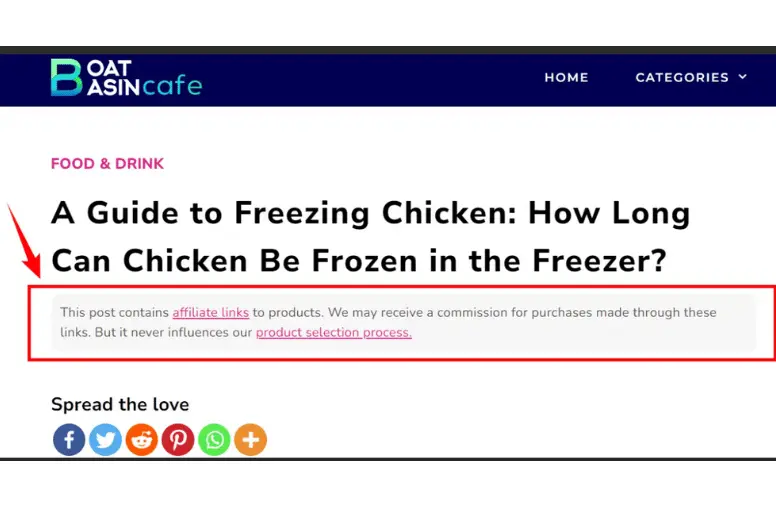
Both Amazon Associates vs Amazon Influencer programs have the same disclosure rules. Whether you’re sharing Amazon affiliate links or your Amazon storefront link, you must include a disclaimer stating that you earn commissions from those links through Amazon. Examples of disclaimers include:
- I earn from qualifying purchases as an Amazon associate/influencer.
- I earn commissions from certain services/products listed here as an Amazon influencer/associate.
- This site is part of the Amazon Services LLC Associates Program, which helps sites earn advertising fees by linking to Amazon.com.
Remember to include at least one of these statements wherever you add an Amazon link on your website. For shorter spaces, you can use a condensed version like “#ad” for stories or limited spaces.
Verdict: Both Amazon Associates and Influencers must clearly disclose their affiliation. However, Associates have more control over placement. They can integrate the “As an Amazon Associate I earn from qualifying purchases” statement seamlessly into their website content. Influencers, relying on social media platforms, might face character limitations or platform-specific disclosure requirements, potentially impacting clarity.
#6. Account termination
Now, let’s discuss a concerning topic: account termination on Amazon, which can happen to partners in the Amazon Influencer vs Associate programs.
a. The Amazon Associates Program
The last difference between Amazon Influencer and Affiliate programs is how Amazon may terminate your account.
In the Amazon Associates Program, failing to generate 3 sales within the first 180 days could lead to account termination. However, you can reapply at any time, and once approved, there’s no minimum requirement for traffic or sales.
Adhere to the rules to avoid termination, such as avoiding link cloaking or misuse of the Amazon trademark.
b. The Amazon Influencer Program
Meanwhile, the Amazon Influencer Program has its own set of rules. Account dormancy, or a lack of active promotion of your Storefront link, can trigger termination. Continuous engagement is key here.
Besides, violating Amazon’s trademark or offering incentives for purchases can result in expulsion from both programs.
Verdict: Both Associate and Influencer accounts face suspension risks for violating Amazon’s policies. However, Influencers have a few additional areas where they can go wrong.
If you prioritize a lower risk of suspension, the Associate program might be a safer bet.
Amazon Associate Vs Influencer – FAQs
The main difference between Amazon Influencer vs Associate programs is in the promotion platforms. The Amazon Influencer Program emphasizes social media, needing substantial engagement and followers, while the Affiliate Program leans towards websites or blogs. Besides, the Influencer Program permits showcasing products through a storefront but restricts linking to individual items, while the Affiliate Program offers flexibility in creating direct links for specific products. Amazon doesn’t set a specific minimum follower requirement for influencers. The needed follower count can differ, but having at least 1,000 followers can increase your chances of approval. Certainly! You can join Amazon’s affiliate program without needing a huge following. However, you need to drive traffic to your website or app and establish trust with your audience to earn from referrals. No, the Amazon Associates program doesn’t allow storefront creation. It emphasizes promoting individual products through affiliate links, rather than organizing collections in a storefront layout.
Amazon Influencer vs Associate: Which One Should You Join?
Now you understand the main differences between the Amazon Influencer vs Associate programs. Although they offer the same pay, they have different rules and advantages.
Here’s what we suggest:
If you’re a blogger with a website, go for the Amazon affiliate program.
In case you have both a blog and social media presence, you can join both programs.
If you still have any questions about Amazon and how it works or to make money, check out our Amazon blogs for sellers. LitCommerce is excited to help you start selling on Amazon and other marketplaces!

